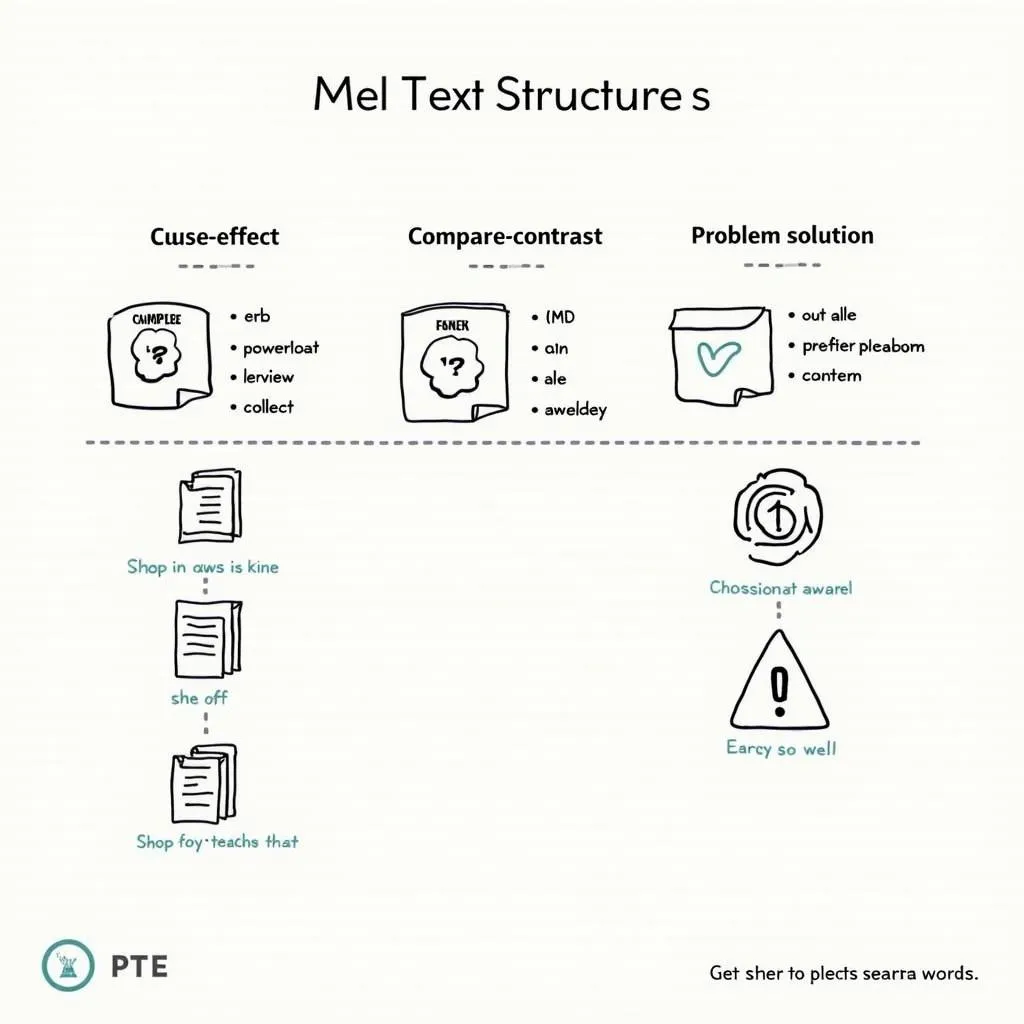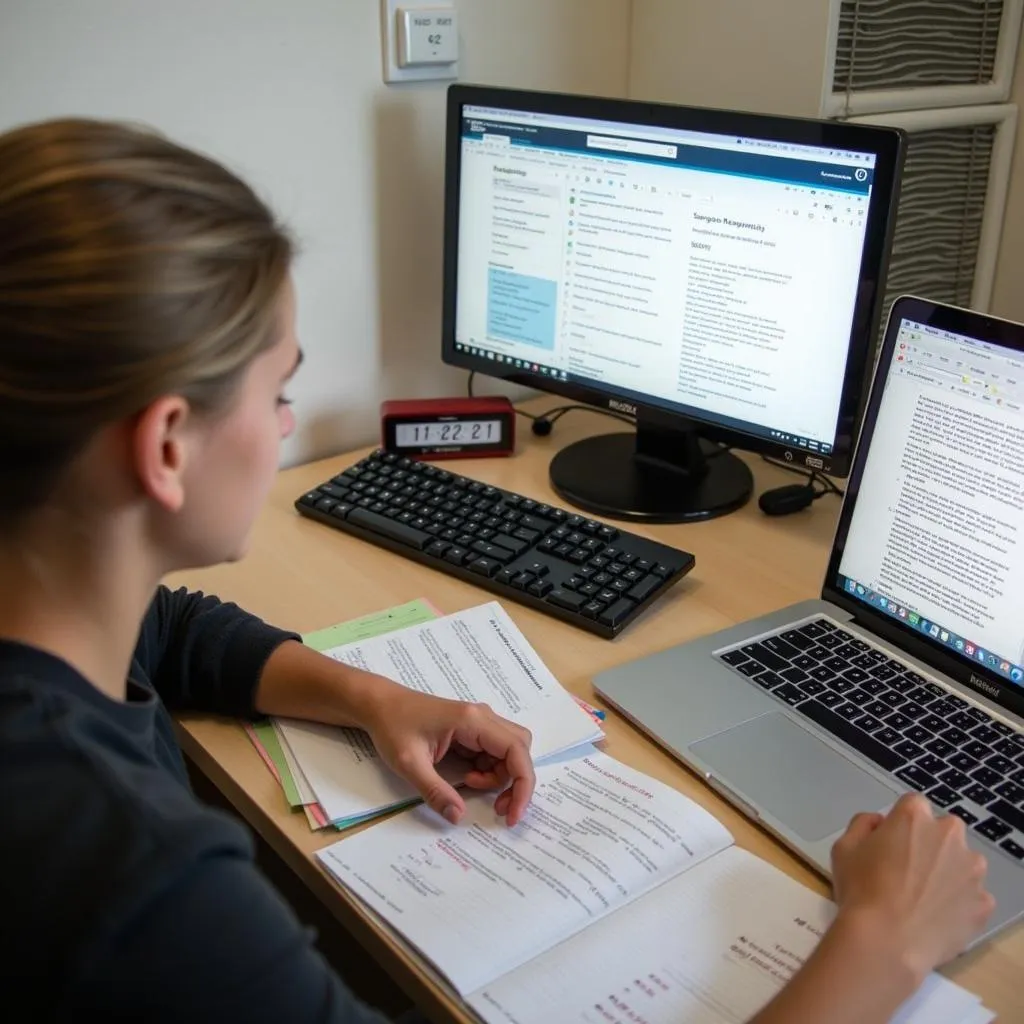Reading comprehension is a crucial component of the PTE Academic exam, testing your ability to understand and analyze complex texts. To excel in this section, you need to develop effective strategies and practice consistently. This comprehensive guide will provide you with expert tips and techniques to improve your performance in PTE Reading Comprehension Exercises.
Understanding the PTE Reading Section
Before diving into specific strategies, it’s essential to familiarize yourself with the structure of the PTE reading section. This part of the exam consists of various question types, including multiple-choice, re-order paragraphs, and fill in the blanks.
How to practice skimming and scanning efficiently for PTE is a crucial skill that can significantly improve your performance in the reading section. By mastering these techniques, you’ll be able to quickly identify key information and save valuable time during the exam.
Common Question Types in PTE Reading
- Multiple Choice (Single Answer)
- Multiple Choice (Multiple Answers)
- Re-order Paragraphs
- Reading & Writing: Fill in the Blanks
- Reading: Fill in the Blanks
Understanding these question types will help you tailor your preparation and develop targeted strategies for each.
Essential Strategies for PTE Reading Comprehension
1. Improve Your Vocabulary
A strong vocabulary is the foundation of successful reading comprehension. To enhance your word power:
- Read widely across various topics and genres
- Keep a vocabulary journal to note down new words
- Use flashcards or vocabulary apps for regular practice
- Study academic word lists relevant to the PTE exam
 Enhancing vocabulary for PTE reading comprehension
Enhancing vocabulary for PTE reading comprehension
2. Practice Active Reading
Active reading involves engaging with the text more deeply. Here’s how to do it:
- Skim the passage quickly to get an overview
- Read the questions before diving into the text
- Underline or highlight key information as you read
- Make mental notes or brief summaries of each paragraph
Dr. Emily Chen, a PTE expert with over 10 years of experience, emphasizes, “Active reading is not just about understanding the words, but about interacting with the text. It’s a skill that can significantly boost your comprehension and retention.”
3. Develop Time Management Skills
Time is of the essence in the PTE exam. To manage your time effectively:
- Allocate specific time limits for each question type
- Practice with timed exercises regularly
- Learn when to move on from difficult questions
- Use the process of elimination for multiple-choice questions
How to manage breaks during PTE exam is another crucial aspect of time management that can help you maintain focus and energy throughout the test.
4. Master Skimming and Scanning Techniques
Skimming and scanning are essential skills for quickly locating information:
- Skim for main ideas by reading topic sentences and conclusions
- Scan for specific details using keywords from the questions
- Practice these techniques with various types of texts
5. Improve Your Understanding of Text Structure
Recognizing text structure can help you navigate complex passages more easily:
- Identify the main idea and supporting details
- Look for transitional words and phrases
- Understand different organizational patterns (e.g., cause-effect, compare-contrast)
 Analyzing text structure for PTE reading comprehension
Analyzing text structure for PTE reading comprehension
Specific Tips for Different Question Types
Multiple Choice Questions
- Read the question stem carefully
- Predict the answer before looking at the options
- Eliminate obviously incorrect choices
- Look for evidence in the text to support your answer
Re-order Paragraphs
- Identify the topic sentence (usually the first sentence of the passage)
- Look for logical connections between paragraphs
- Pay attention to transitional phrases and pronouns
Fill in the Blanks
- Read the entire passage to understand the context
- Look for grammatical clues (e.g., parts of speech, tense)
- Consider collocations and common phrases
Dr. Michael Thompson, a renowned PTE coach, advises, “When tackling fill in the blanks questions, always read beyond the blank space. The words that follow often provide crucial context for selecting the correct answer.”
Practice Makes Perfect
Consistent practice is key to improving your PTE reading comprehension skills. Here are some ways to incorporate practice into your study routine:
- Use official PTE practice materials
- Read academic articles and journals regularly
- Take timed practice tests to simulate exam conditions
- Analyze your mistakes and focus on improving weak areas
PTE academic official preparation course review can provide valuable insights into the most effective study materials and resources available.
 Effective PTE reading comprehension practice session
Effective PTE reading comprehension practice session
Creating a PTE Reading Study Plan
To make the most of your preparation time, create a structured study plan:
- Assess your current reading level
- Set realistic goals for improvement
- Allocate specific time slots for different reading exercises
- Include regular review sessions to reinforce learning
PTE study plan for working professionals offers valuable tips on balancing PTE preparation with work commitments.
Conclusion
Mastering PTE reading comprehension exercises requires dedication, strategic practice, and the right approach. By implementing the tips and strategies outlined in this guide, you’ll be well-equipped to tackle the reading section of the PTE Academic exam with confidence. Remember, consistency is key, and with regular practice, you’ll see significant improvements in your reading comprehension skills.
As you prepare for your PTE exam, keep in mind that a well-rounded PTE preparation timeline can help you stay on track and ensure you’re covering all aspects of the test. Stay focused, practice regularly, and approach your PTE reading comprehension exercises with a positive mindset. Success is within your reach!
FAQ
How long should I spend practicing PTE reading comprehension exercises daily?
Aim for at least 30-60 minutes of focused reading practice daily. Consistency is more important than long, sporadic study sessions.
Are there any online tools that can help me improve my PTE reading skills?
Yes, there are many online resources like PTE practice websites, reading comprehension apps, and vocabulary builders that can supplement your study materials.
How can I improve my reading speed for the PTE exam?
Practice timed reading exercises regularly, use a finger or pen to guide your eyes, and gradually increase your reading pace while maintaining comprehension.
What types of texts should I read to prepare for PTE reading comprehension?
Focus on academic texts, scientific articles, and news pieces from reputable sources that cover a wide range of topics similar to those in the PTE exam.
How can I overcome anxiety during the PTE reading section?
Practice under timed conditions, familiarize yourself with the exam format, and use relaxation techniques like deep breathing to stay calm during the test.